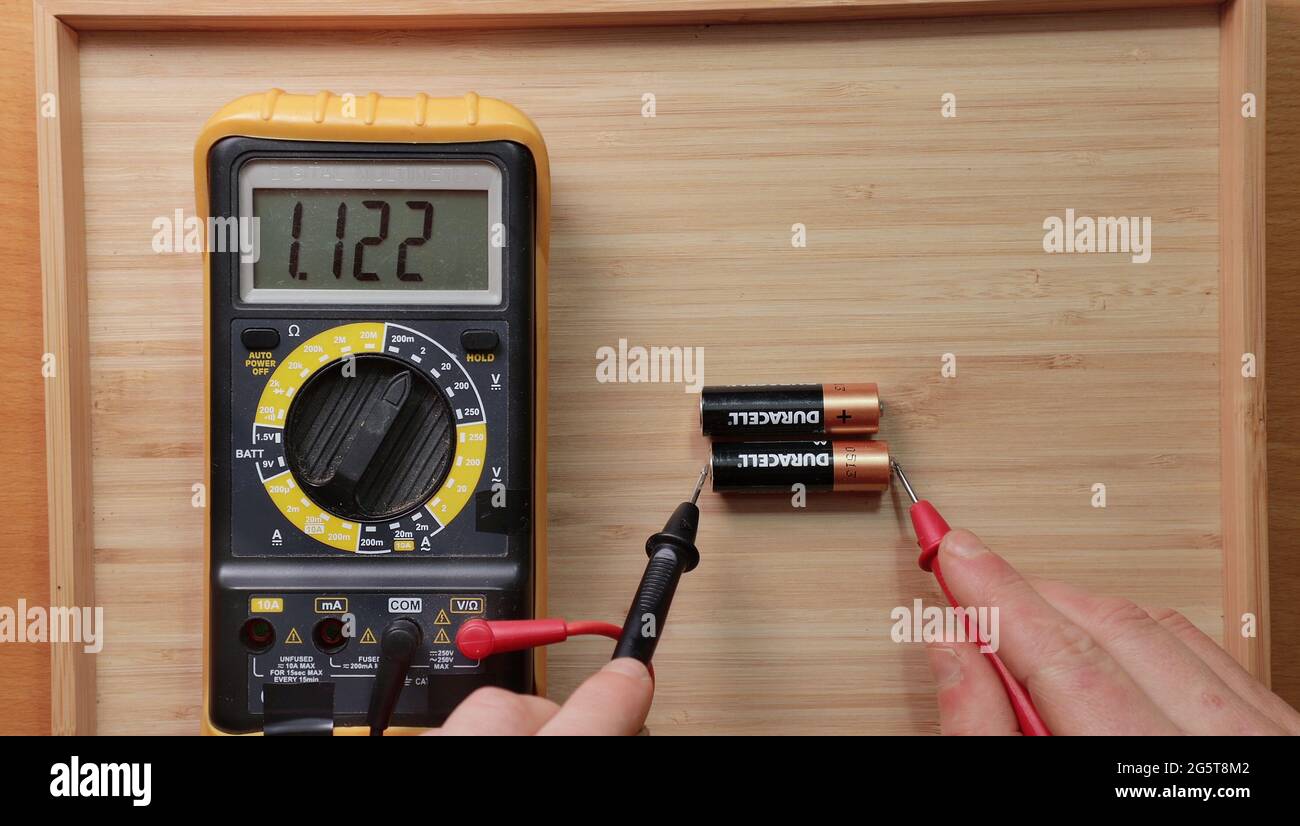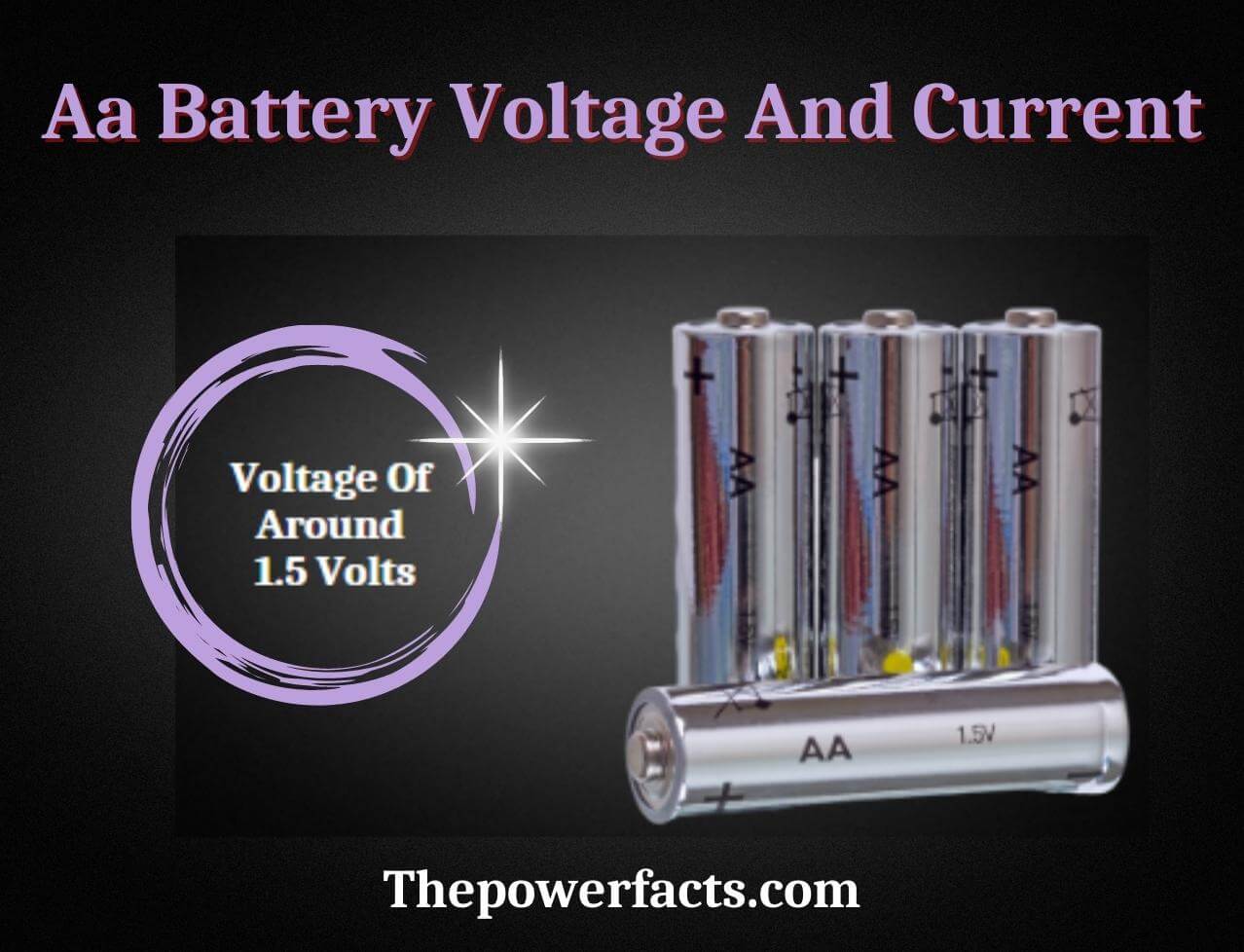Have you ever wondered what makes your remote control work, or why some battery-powered toys zoom faster than others? It often comes down to something called voltage, a fundamental idea in how electricity gets things done. When we talk about an AA battery, we are looking at a small, self-contained source of this electrical push, and knowing a little about it can help you pick the right power for your gadgets. It is, you know, a pretty common question for folks just starting to think about how their everyday devices get their juice.
An AA battery, a familiar sight in homes everywhere, provides a steady supply of this electrical push. Think of voltage as the force or pressure that makes electricity move through a circuit. It is a bit like the water pressure in a hose; more pressure means water sprays out with more vigor. For an AA battery, this pressure is usually quite consistent, which is why it is a reliable choice for many portable items. So, too it's almost, the amount of push an AA battery gives helps determine how well a device will operate.
This electrical push, or voltage, from an AA battery is what allows it to do work, whether that is lighting up a small bulb or spinning a tiny motor. Understanding this concept helps us see why some devices need one battery while others need several. It is, in some respects, about matching the right amount of electrical effort to the task at hand. Just a little bit of knowledge about this can go a long way in making sense of your battery-powered world.
- How To Connect Ssh Iot Device Over Internet Aws Without
- How Much Does Jake From State Farm Make
- Nancy Carell
- Ben Affleck Weight
- The Rock Turtleneck
Table of Contents
- Voltage - What Is It, Really?
- The Push and the Flow - What Is Voltage of an AA Battery?
- How Can You Combine AA Batteries for More Voltage?
- Do Wires Change What Is Voltage of an AA Battery?
- Why Do Some Circuits Need a Different Kind of Voltage?
- Sharing the Electrical Push - What Is Voltage of an AA Battery?
- What About Special Parts and Their Voltage Needs?
- Adjusting the AA Battery Voltage for Your Device
Voltage - What Is It, Really?
When people talk about voltage, they are often referring to the electrical potential difference between two points. It is, you know, the "oomph" that pushes electricity around a path. Think of it a bit like a hill. The higher the hill, the more potential energy something has at the top, ready to roll down. In the same way, voltage represents the potential for electrical current to move. A standard AA battery typically provides about 1.5 volts. This number tells you the amount of electrical push it can offer to a device. It is, pretty much, a consistent amount of electrical readiness.
This electrical push from a battery helps regulate how fast something, say a small toy motor, can spin. If you have a motor that needs a certain amount of push to get going, an AA battery delivers that. If you were to use a battery with a much higher voltage, that motor might spin too fast or even get damaged, because it is getting too much of a shove. So, it is about matching the battery's push to what the device can handle. That, is that, a very real consideration for makers of battery-powered things.
Voltage, in its most basic sense, is always a comparison. One end of a battery only has a certain electrical push when you compare it to the other end. You cannot really talk about the voltage of just one terminal; it always needs a reference point. For an AA battery, this means the difference between its positive and negative ends. This difference is what drives the electrical flow when you connect it to a device. It is, naturally, how all batteries work to create a flow of electricity.
How Does Voltage Affect What Is Voltage of an AA Battery?
The amount of electrical push an AA battery provides directly influences how much electrical flow, or current, can move through a device connected to it. If you have more voltage, you generally get more current, assuming the path for electricity stays the same. It is a bit like turning up the water pressure in a hose; more pressure means more water flows out. For an AA battery, its 1.5 volts provide a certain amount of push, allowing a specific amount of current to flow through the device it is powering. This, in a way, is why different devices need different kinds of batteries or different numbers of them.
However, this simple idea, that more voltage means more current, has its limits. The path for electricity, what we call the circuit, also plays a big part. If the circuit offers a lot of resistance, even a strong electrical push from an AA battery will only result in a small flow. Think of it like trying to push water through a very narrow pipe; even with high pressure, not much water gets through. So, it is a combination of the battery's push and the device's electrical needs that determines the actual flow. This, actually, is pretty important to keep in mind.
The Push and the Flow - What Is Voltage of an AA Battery?
When we talk about the voltage of an AA battery, we are really talking about the potential it has to make electrical charges move. This movement of charges is what we call current. So, in a simple setup, the battery provides the push, and the device allows the flow. If a device needs a lot of electrical flow to work, it might need a greater push, meaning a higher voltage, or it might need to draw more current from the existing voltage. An AA battery, with its standard 1.5 volts, is designed to give a consistent amount of this push for a variety of small, everyday items. It is, you know, a very common and convenient power source.
The relationship between the electrical push (voltage) and the flow (current) is quite close. If you have a device that needs a certain amount of work done, the voltage from the AA battery helps determine how much power is delivered. For instance, if you have a simple path for electricity, like a light bulb, and you connect it to an AA battery, the light will glow with a certain brightness. If you were to connect it to a battery with more voltage, it would glow brighter, assuming the bulb could handle the extra push without burning out. This connection between push and work is, pretty much, how electrical systems operate.
How Can You Combine AA Batteries for More Voltage?
Sometimes, a single AA battery's 1.5 volts just isn't enough electrical push for a particular device. Many gadgets need a greater push, perhaps 3 volts, 4.5 volts, or even more. This is where combining AA batteries comes into play. When you arrange batteries in what is called a "series" setup, you connect the positive end of one battery to the negative end of the next. This arrangement adds up their individual electrical pushes. For example, two AA batteries in series will give you roughly 3 volts, while three in series would provide about 4.5 volts. It is, sort of, like stacking small hills to make a bigger one, increasing the overall potential for things to move.
This way of combining batteries is very common in household electronics. Think about a flashlight that takes two AA batteries; those batteries are almost always connected in series to double the electrical push and make the light brighter. The total voltage from this arrangement is the sum of each battery's voltage. This method is, you know, a straightforward way to get the exact amount of electrical push a device needs without having to find a single, larger battery. It gives you a lot of flexibility, essentially, in how you power things.
Do Wires Change What Is Voltage of an AA Battery?
Even with a consistent electrical push from an AA battery, the wires connecting it to a device can cause a slight reduction in that push. This is known as "voltage drop." It means that by the time the electricity reaches the device, the voltage might be just a little bit less than what the battery started with. Think of it like water flowing through a long pipe; some pressure is lost along the way due to friction. For short wires and small currents, this drop is usually tiny and not a concern for AA battery-powered devices. However, if you had very long or very thin wires, or if the device needed a lot of electrical flow, this small loss could become more noticeable. It is, basically, a natural part of any electrical path.
Anticipating this small reduction in electrical push is sometimes important, especially for sensitive devices. While an AA battery is quite reliable, if a device absolutely needs a precise amount of voltage to work correctly, you might need to consider the length and type of wires used. Most of the time, for common AA battery uses, this isn't something you need to worry about much. But it is, you know, a factor that electrical designers sometimes think about to make sure everything works as it should. So, in a way, even the humble wire plays a role.
Why Do Some Circuits Need a Different Kind of Voltage?
Most devices that use AA batteries operate with what is called a "positive voltage" relative to a common reference point, often called "ground." This means the electrical push flows from the battery's positive terminal to its negative terminal, which is usually connected to the circuit's ground. However, some more complex electronic setups require a "negative voltage" or even both positive and negative voltages. This doesn't mean the AA battery itself changes its nature; it means how the battery is connected within the circuit is different. For example, in a setup needing negative voltage, the positive side of an AA battery might be considered the circuit's ground, making the negative terminal effectively "negative" relative to that ground. This is, you know, a pretty clever way to get different kinds of electrical pushes.
If a circuit needs both positive and negative voltages, you might see two AA batteries used together in a specific arrangement. One battery could provide the positive push, and another could be connected in a way that creates a negative push relative to the circuit's ground. This allows for a wider range of electrical operations within a device. While an AA battery itself only offers a direct, single-direction push, how you hook it up gives engineers flexibility. It is, sort of, like using the same building blocks to create different structures, depending on how you arrange them. So, in some respects, the battery is versatile in how it can be used.
Sharing the Electrical Push - What Is Voltage of an AA Battery?
When you connect an AA battery to a circuit that has several components arranged one after another, in what is called a "series circuit," the electrical push from the battery gets shared among those parts. Imagine a chain of people passing a bucket of water; each person in the chain takes a little bit of the effort to move the bucket along. In an electrical circuit, each component, like a light-emitting diode (LED) or a small current-limiting part, uses up a portion of the battery's voltage to do its job. The sum of the voltage used by each component will add up to the total voltage provided by the AA battery. This is, you know, a fundamental principle of how electricity works in a continuous path.
Let's say you have a simple setup with an AA battery, a small light, and a resistor, all connected in a single loop. The 1.5 volts from the AA battery will be distributed. The light will use some of that electrical push to glow, and the resistor will use some to limit the flow of current. Each part gets its share of the battery's electrical effort. This sharing ensures that no single part gets too much of the push, which could damage it, and that the total push is accounted for across the entire path. It is, pretty much, how things are balanced in a simple electrical system. So, in a way, the AA battery's voltage is a shared resource.
What About Special Parts and Their Voltage Needs?
Certain electronic components, like diodes, have specific ways they interact with the electrical push from an AA battery. A diode, for instance, is a one-way street for electricity. It allows current to flow easily in one direction but blocks it in the other. When you try to push electricity through a diode in the "wrong" direction, it resists that push. The amount of push it can resist before it might break down is called its "reverse voltage." This is, you know, a very important limit for these parts.
For example, if you connect an AA battery to a diode in a way that tries to force the current backward, the diode will block the flow as long as the battery's 1.5 volts are less than the diode's reverse voltage limit. If the reverse push were to get too high, the diode could fail. This understanding of how parts react to voltage, even from a simple AA battery, is key to designing circuits that work reliably. It is, basically, about knowing the boundaries of the components you are using. So, in some respects, even small parts have big rules about voltage.
Adjusting the AA Battery Voltage for Your Device
Sometimes, you might have a device that needs a specific amount of electrical push, say 4.5 volts, but you only have a power source that gives 12 volts, which is much more than an AA battery provides. While this example uses a larger source, the idea applies to any voltage adjustment. You can reduce a higher electrical push to a lower, needed level by using a component called a resistor. A resistor acts a bit like a narrow section in a water pipe, reducing the pressure of the water as it passes through. By carefully choosing the right resistor, you can "drop" some of the excess voltage, ensuring the device gets just the right amount of push it needs. This is, you know, a very common technique in electronics.
The amount of voltage a resistor will "drop" depends on its value and how much electrical flow is passing through it. This allows engineers to fine-tune the voltage delivered to a specific part of a circuit, even if the original power source, like a series of AA batteries providing a higher total voltage, gives too much. It is a way to make sure that a sensitive component receives only the electrical push it is designed for, preventing damage and ensuring proper operation. This, essentially, gives you control over the electrical push in a circuit. So, in a way, resistors are like voltage managers for your electrical flow.
This article has covered what voltage means in the context of an AA battery, how its electrical push affects devices, and how combining batteries can increase total voltage. We explored how wires can cause minor voltage drops and why some circuits need different voltage arrangements. The piece also touched on how the battery's voltage is shared among components in a circuit and how special parts react to electrical push. Finally, it looked at how to adjust voltage for specific device needs.
Related Resources:



Detail Author:
- Name : Mr. Maximus Oberbrunner
- Username : rogahn.joesph
- Email : nicklaus13@reynolds.com
- Birthdate : 1978-11-27
- Address : 42683 Schinner Locks Port Isom, NH 51427
- Phone : 478.992.9734
- Company : Cremin, Effertz and Stanton
- Job : Director Of Talent Acquisition
- Bio : Fugiat tempore similique fuga. Et ut voluptatem et libero. Quidem qui et tempora quidem sequi et ut.
Socials
facebook:
- url : https://facebook.com/tsmith
- username : tsmith
- bio : Veritatis quod numquam voluptatem consectetur enim.
- followers : 4375
- following : 1199
linkedin:
- url : https://linkedin.com/in/smitht
- username : smitht
- bio : Sunt facilis qui voluptate.
- followers : 1533
- following : 954
instagram:
- url : https://instagram.com/smith1979
- username : smith1979
- bio : Et sint necessitatibus qui dolores amet doloremque. Laborum et est quas ut.
- followers : 4956
- following : 116
twitter:
- url : https://twitter.com/thalia7097
- username : thalia7097
- bio : Quam ea magni et quas qui. Aut et natus omnis qui blanditiis.
- followers : 4663
- following : 2086